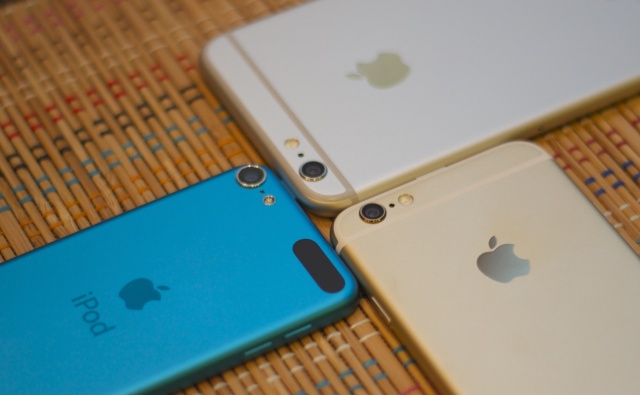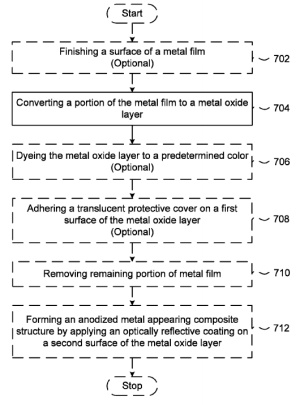
Apple has filed for a patent for composite materials that look like anodized metal, but are still non-capacitive and radio frequency (RF) transparent—so that future Apple devices aren't marred by the highly visible antenna lines that can be found on the iPhone 6.
The US patent application (#20150167193) outlines the predicament faced by Apple and other device makers: "Many computing devices have outer housings and coverings that include metallic surfaces giving the devices an aesthetically pleasing and durable look and feel," but metal is not RF-transparent and is usually highly capacitive. As a result, there are portions of the device (touchpads, antenna housings) that must be made of plastic, glass, or some other suitable material—a material that doesn't have the same look and lustre of the anodized metal chassis.
The patent details two processes for making such a material, but here's the summary:
The method includes converting a portion of a metal layer to a metal oxide layer that overlays an unconverted portion of the metal layer at a first surface of the metal oxide layer. The unconverted portion of the metal layer is viewable through the metal oxide layer. The method also involves exposing the first surface of the metal oxide layer by removing the unconverted portion of the metal layer. The method further involves forming the composite structure by applying an optically reflective layer that is substantially non-electrically capacitive on the exposed first surface of the metal oxide layer. The composite structure has the appearance of the anodized metal when viewed from a second surface of the metal oxide layer opposite the first surface.

Reading through the processes, we didn't spot anything that sounded particularly outlandish. This is just a patent, though: it doesn't tell us whether the processes will be able to withstand the rigours of mass production, and it doesn't give us the actual RF transparency and capacitance figures. If the materials are even slightly less transparent than plastic housings, it could result in a significant drop in signal quality.
The goal, of course, is to allow Apple to make all-metal smartphones, tablets, and laptops that don't have incongruous plastic or glass antenna housings. The iPhone 4S only had small visible antenna bands, but for the iPhone 5 and 5S the whole top and bottom of the backside of the phone were made of a different material. The iPhone 6, of course, has some distinctive plastic lines that are at odds with the phone's exceedingly svelte appearance.
Laptops aren't under quite so much pressure because the glass or plastic bezel around the screen is the perfect place for antennas—but as bezels get smaller and design constraints become stricter, new RF-transparent materials will surely be welcomed by device makers.
On the same day that Apple filed the lookalike-metal patent, it also applied for US patent #20150173222, which outlines a method of making polymers that are colour-matched to anodized metals.
reader comments
9